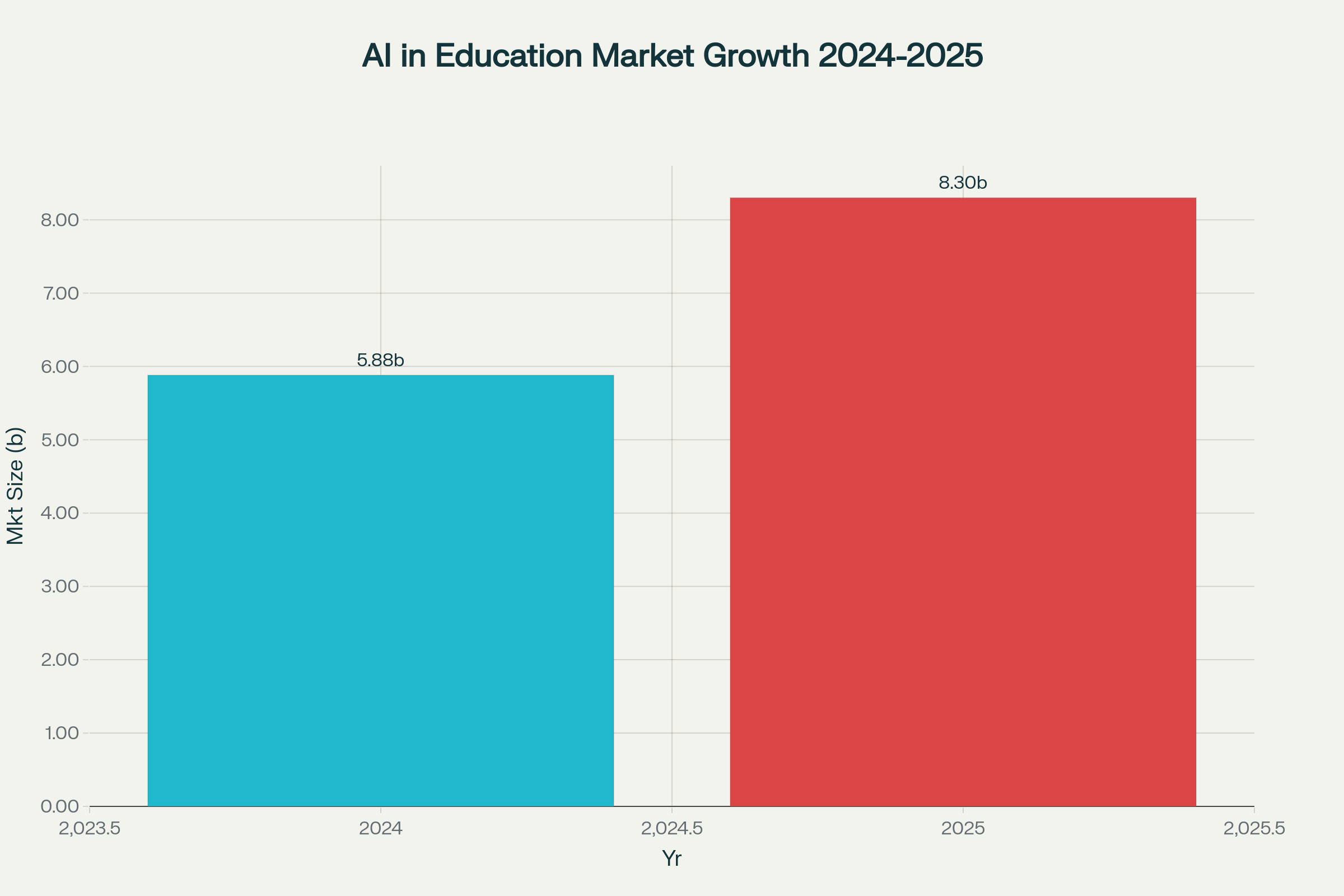The Rise of AI in Education: Impacts and Opportunities
Introduction
Artificial Intelligence (AI) is transforming the education landscape in remarkable ways. As educational institutions, teachers, and students around the globe embrace AI-powered solutions, the sector is witnessing dramatic improvements in personalized learning, accessibility, and efficiency. The integration of AI technologies is not only reshaping curricula but also redefining how knowledge is delivered and assessed.
AI in Education: A New Era
Defining AI in Education
AI in education refers to the application of intelligent systems and algorithms in teaching, learning, and administration. Key applications include:
- Personalized learning through adaptive platforms
- Automated grading and assessments
- Smart content creation and curation
- Virtual tutors and chatbots for real-time student support
Market and Adoption Trends
The global market for AI in education reached $5.88B in 2024 and is expected to climb to $8.3B in 2025, driven by demand for individualized learning and operational efficiency. Over 47% of school leaders now use AI daily to enhance lessons and streamline processes.
Impacts of AI in Education
1. Personalized and Adaptive Learning
AI-driven platforms analyze student performance, detect knowledge gaps, and automatically adjust lesson difficulty.Adaptive tools have boosted student test scores by up to 62%, with 67% of learners reporting increased study effectiveness. Real-world example: India’s BYJU’S and Embibe, and global platforms like Khan Academy’s Khanmigo AI tutor, offer hyper-personalized learning tailored to each individual.
2. Enhanced Accessibility and Inclusion
AI enables learners with disabilities to access tailored content via speech-to-text, voice recognition, and translation tools. AI-generated subtitles, audio materials, and emotion recognition are leveling the playing field for visually and auditorily impaired students.
3. Administrative Efficiency for Educators
Automated grading systems reduce teacher workload by 70%, allowing more time for lesson planning and student engagement. AI automates repetitive tasks like attendance, assignment checks, and scheduling, improving overall educational management.
4. Smart Content Creation
AI creates, updates, and customizes digital textbooks, quizzes, and instructional materials, ensuring content remains current and effective. Over 55% of EdTech companies now use AI for content production, saving 40% more time than traditional approaches.
5. 24/7 Student Support
Virtual tutors and AI-powered chatbots provide instant feedback and support, helping students access guidance any time.
This boosts student confidence, autonomy, and learning satisfaction.
Opportunities: The Future of AI in Education
1. Data-Driven Decision Making
AI processes vast educational datasets, uncovering trends that inform policy and teaching strategies. Schools can better identify at-risk students and intervene with precision.
2. Expanding Access to Quality Education
AI-powered tools break geographical and linguistic barriers, offering top-tier resources to underserved communities.
3. Lifelong Learning and Upskilling
Personalized AI resources adapt to professionals and adult learners, supporting continuous skill development in a rapidly changing job market.
4. Ethical and Responsible Implementation
With these advances come questions about data privacy, bias, and transparency. Educational policymakers must ensure AI deployment upholds ethical standards to maximize benefits and minimize risks.
The market for AI in education is experiencing rapid expansion as schools, edtech firms, and governments worldwide embrace intelligent technologies. This growth is fueled by rising demand for adaptive learning, efficient administration, and personalized educational experiences.
AI in Education Market Size
2024: $5.88 billion
2025: $8.3 billion
Growth: Approximately 41% increase in just one year.
This exponential growth indicates that investment in AI-powered educational tools and solutions is accelerating, reinforcing the role of artificial intelligence in shaping the future of learning.

Key Drivers Behind the Market Surge
Personalized Learning Experiences: Adaptive AI platforms cater content to individual student needs, improving outcomes and engagement.
Automation for Teachers: Smart grading, scheduling, and administrative tasks free up educator time.
Increased Accessibility: Language translation, content creation, and assistive technology expand education access for all learners.
EdTech Innovation: Constant refinement of AI solutions by startups and established providers.
Implications for Stakeholders
Students gain unprecedented access to tailored learning resources and real-time feedback.
Educators can focus more on interactive, creative teaching rather than repetitive administrative work.
Institutions become more efficient and responsive to both student needs and evolving industry requirements.
Looking Ahead
The surge in AI investment and adoption hints at new possibilities—ranging from fully virtual classrooms enhanced by intelligent tutors to advanced analytics for student wellbeing and performance monitoring. As the education sector continues to transform, understanding these trends is essential for educators, administrators, and technology providers alike.
Conclusion
The rise of AI in education represents both an unprecedented opportunity and a vital challenge, making learning more accessible, efficient, and tailored than ever before. As technology continues to evolve, educators and institutions must prioritize ethical practices and leverage AI thoughtfully to build a more equitable, engaging, and innovative educational future.
Frequently Asked Questions
1) How does AI personalize learning?
AI algorithms adapt tasks and content to a student’s pace, preferences, and knowledge gaps for maximized engagement and retention.
2) Can AI replace teachers?
No. AI is a tool that augments teachers’ abilities, automates repetitive tasks, and provides support so teachers can focus more on student interaction and creativity.
3) What about data security and privacy?
Responsible AI adoption requires addressing concerns around data security, bias, and ethical use to build trust and transparency in educational environments
